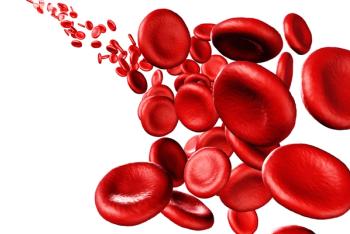
- ONCOLOGY Vol 22 No 12
- Volume 22
- Issue 12
Socioeconomic and Treatment Factors Affect Non-Hodgkin Lymphoma Patients’ Survival
Socioeconomic factors and the type of treatment received have an impact on a non-Hodgkin lymphoma (NHL) patient’s risk of dying.
Socioeconomic factors and the type of treatment received have an impact on a non-Hodgkin lymphoma (NHL) patient’s risk of dying. That is the finding of a new study to be published in the December 1, 2008 issue of Cancer. The study reveals that poorer socioeconomic status increases a patient’s risk of dying, while receiving chemotherapy reduces the risk.
NHL is common in the elderly. Its incidence has been increasing over the past several decades, and Caucasians have higher incidence and death rates related to the disease than patients in other ethnic groups. Newer treatments for NHL have become available in recent years; however, studies have not addressed ethnic disparities in survival as they relate to treatment, diagnosis, socioeconomic status, or other factors.
To investigate the issue, Xianglin Du, md, of the University of Texas School of Public Health in Houston and colleagues analyzed Surveillance, Epidemiology and End Results (SEER)-Medicare linked data for more than 13,000 patients diagnosed at age 65 or older between 1992 and 1999.
Dr. Du and his team analyzed data related to survival, socioeconomic status, treatment (chemotherapy or radiation), tumor factors (stage and type of NHL), the presence of other diseases or conditions, and other characteristics such as age, race, marital status, and geographic area.
The investigators found that receiving chemotherapy was associated with prolonged survival in patients with NHL and that elderly Caucasian patients with NHL were more likely to receive chemotherapy (52.4%) compared with African-Americans (43.2%). Also, poor socioeconomic status was significantly associated with increased risk of mortality, and there were a larger proportion of African-American patients living in poor communities compared with other ethnicities. No significant differences in the risk of death were seen between African-Americans and Caucasians after controlling for factors such as treatment and socioeconomic status.
Articles in this issue
about 17 years ago
Adult Burkitt Lymphoma: Advances in Diagnosis and Treatmentabout 17 years ago
Multidisciplinary Management of Resectable Rectal Cancerabout 17 years ago
Hodgkin Lymphoma in Older Patients: An Uncommon Disease in Need of Studyabout 17 years ago
Management of Myelodysplastic Syndromes: 2008 Updateabout 17 years ago
Hodgkin Lymphoma and the Impact of Ageabout 17 years ago
The Challenges of Hodgkin Lymphoma in the Elderlyabout 17 years ago
Thirty Years of Rectal Cancer Research: A Brief Historyabout 17 years ago
Treating Rectal Cancer: Key Issues ReconsideredNewsletter
Stay up to date on recent advances in the multidisciplinary approach to cancer.

















































































